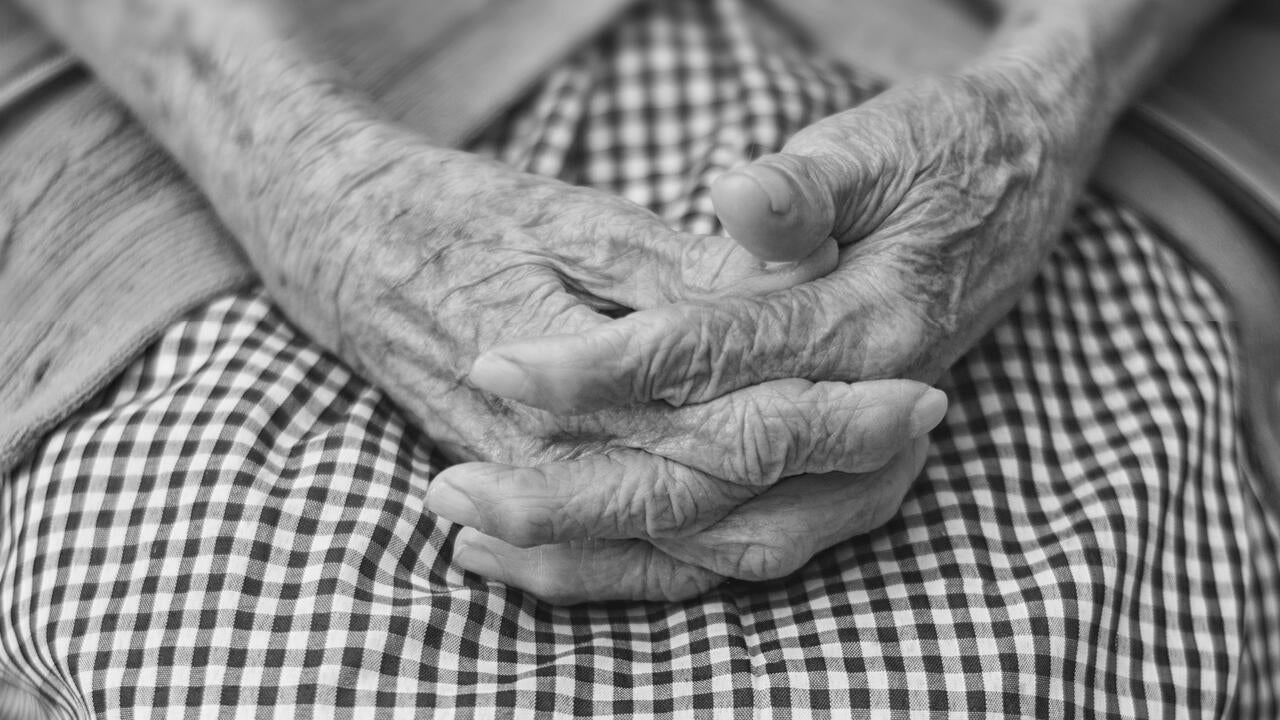
Long-term care and our loved ones
How a new COVID-19 screening tool can be used to identify older adults at risk

How a new COVID-19 screening tool can be used to identify older adults at risk
By Angelica Sanchez University RelationsRecent public health data shows that people over the age of 60 make up 93 per cent of deaths in Canada related to COVID-19. Half of the COVID-19 deaths have happened in retirement and nursing homes, which continue to be hit the hardest by COVID-19 cases. Many in our community may feel like there’s nothing that can be done to help our parents and grandparents deal with the pandemic.
John Hirdes is a professor from the School of Public Health and Health Systems. On Wednesday, May 13, he joined us for this week’s Ask our Experts community talk to answer questions about COVID-19 and older adults, as well as share his work on the new COVID-19 Vulnerability Screener.
“The COVID-19 pandemic has been a challenge for people of all ages … but the pandemic has two major associations with the aging process,” Hirdes says. “The concept of frailty and multimorbidity is what makes older adults a vulnerable group.”
Hirdes explains that the three settings: long-term care homes, retirement homes and in-home care, each dealing with a very large population of people with high-risk levels. But these important care settings were not treated like traditional front-line health settings — like hospitals — and lacked personal protective equipment (PPE) to protect both the residents and the health-care workers.
“We know there is an asymptomatic phase where people can feel fine but actually have the virus and not know it,” Hirdes says. The problem is that health care workers have trouble achieving a living wage or only receive part-time hours. “So, they need to work at multiple homes,” he adds. Once workers catch COVID-19 from one home, they can transfer the virus to other people in the next home without knowing it.
But it’s not just the virus that we need to be thinking about. Hirdes says we also need to be cognizant of the secondary consequences of social distancing on the older population. An older person’s ability to perform day-to-day actions will decline, which may affect their health because they are not getting normal exercise. They may also be experiencing more isolation and depression being away from loved ones, or not able to access the care they need to treat chronic illnesses. There are many elements to consider when assessing who is more at risk to the COVID-19 virus.
“Social distancing protects frail older persons, but the ensuing isolation can cause serious, undetected physical and mental health consequences leading to catastrophic decline, hospitalization and death if the person does contract COVID-19.”
Hirdes explains that we have a pretty good understanding of the impact of COVID-19 on retirement homes and long-term care, but there are not enough screenings occurring to determine a person’s vulnerability to the disease. The COVID-19 Vulnerability Screener was created by Hirdes and his team to provide those assessments and identify the immediate risks of COVID-19 among the elderly.
“The COVID-19 Vulnerability Screener can be used by laypersons to identify older adults at risk,” Hirdes says. The screener includes questions about COVID-19 symptoms, but also has questions to indicate frailty and other complex underlying health concerns. Hirdes confirms that the screening procedure can be completed by anyone through a video call or a phone call.
Learn more about the COVID-19 Vulnerability Screener
Next week, our Waterloo expert will be Shana MacDonald from the Department of Communication Arts at the University of Waterloo. Professor MacDonald specializes in the relationship between technology and public discourse.
On Wednesday, May 20 at noon, MacDonald will share her tips on everything from which apps are best to keep kids learning while at home to how to spot fake news stories about COVID-19 on your social media feeds.

Read more
How to manage stress and anxiety during the COVID-19 pandemic

Read more
From research to 3D-printed masks and equipment donations, the University community is mobilizing to combat the coronavirus here at home and globally

Read more
Waterloo engineers creating personalized masks for front line workers and patients with autoimmune deficiencies
The University of Waterloo acknowledges that much of our work takes place on the traditional territory of the Neutral, Anishinaabeg, and Haudenosaunee peoples. Our main campus is situated on the Haldimand Tract, the land granted to the Six Nations that includes six miles on each side of the Grand River. Our active work toward reconciliation takes place across our campuses through research, learning, teaching, and community building, and is co-ordinated within the Office of Indigenous Relations.